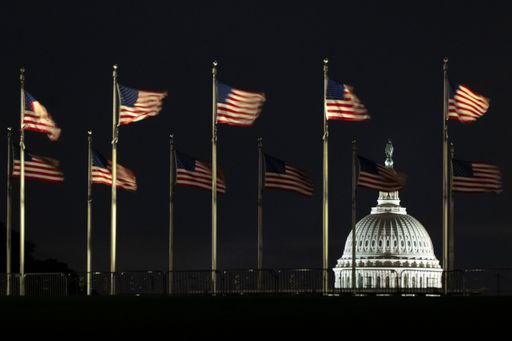Washington, DC —The Capitol dome stands pale in the October light, with its corridors quieter than usual. The shuffle of aides, the hum of tourists, and the clipped echo of staff shoes are distinctly thinner.
A young Congressional staffer, clutching her coffee and phone, quickly moves past a cluster of cameras outside the Congress on Wednesday afternoon.
Services that many Americans rely on were upended from midnight, and many US government functions ground to a halt, as a bitter impasse between US President Donald Trump and Democrats in Congress over spending shut down much of the federal government for the first time in nearly seven years.
TRT World tried speaking to a furloughed worker outside the Smithsonian Museum. He shook his head, said only that he worked there, then turned away without comment. The silence carried more weight than words. Another worker muttered, "I'm told to wait at home. But bills don't wait."
Among other services, the assistance for veterans transitioning to civilian life is on hold. The Centers for Disease Control and Prevention has halted health-related communications to the public.
Some data collection and economic analysis, like the jobs report set for release on Friday, have been paused. Most civil litigation out of the Justice Department has stopped. No new education grants will go out.
The list is long.

Government at standstill
Government shutdown is not spectacle. It is silence. A vast machine brought to a halt, its moving parts suspended midair.
While critical areas like national security, air traffic control, and Social Security payments continue, the rest — parks, agencies, reports, offices, among other areas — are frozen. Roughly 750,000 federal workers may be furloughed.
Along the National Mall (a vast landscaped park near downtown Washington, DC), tourists continue their steady march. School groups chatter, their guides raising voices over the noise, pointing to monuments, rattling off dates.
To the casual visitor, nothing looks broken. The rupture hides in paperwork, paychecks, and stalled projects.
"We planned this trip for months," said a visitor from out of state, snapping a picture near the Capitol. "It's strange to see all this beauty and then hear the government isn't even working."
A member in the group chimed in: "So the parks are shut, but we can still walk around? Doesn't make sense."
US federal government entered a shutdown at midnight on October 1, 2025, after Congress failed to pass a funding bill amid deep partisan divisions between Democrats and Republicans, with blame exchanged over stalled negotiations on spending priorities.

'No one tells us anything'
While some functions endure, much of the day-to-day government machinery has stopped. The battle is over numbers on paper, yet its shadow falls on ordinary lives.
On the steps of the Capitol, a woman in a red coat pauses, snapping photographs against the marble columns. Reporters glance up briefly, then turn back to their phones, scrolling for statements, updates, fragments of progress.
Nearby, a Capitol police officer shifts in his post, watching the clusters of cameras and tourists.
"Shutdown doesn't change much for us," he told TRT World. "We just keep standing here, keeping an eye on things." Another officer shrugged when asked how long they expect it to last. "Could be days. It could be weeks. No one tells us anything."
By mid-afternoon, the air is sharper. The dome glows against the October sky. But inside, the atmosphere remains thick, almost airless.
On Wednesday, the US Senate held two votes on funding bills that mirrored the failed votes it took on Tuesday. Both failed, meaning the government shutdown continues.
Meanwhile, Washington wears the shutdown quietly. It waits, its monuments unchanged, its politics unbending, and Americans carry on in the shadow of a stalled official machinery.




















